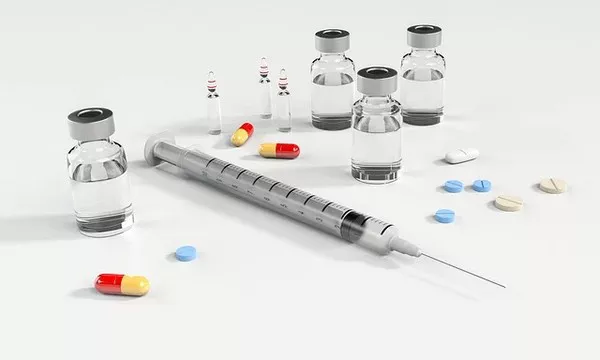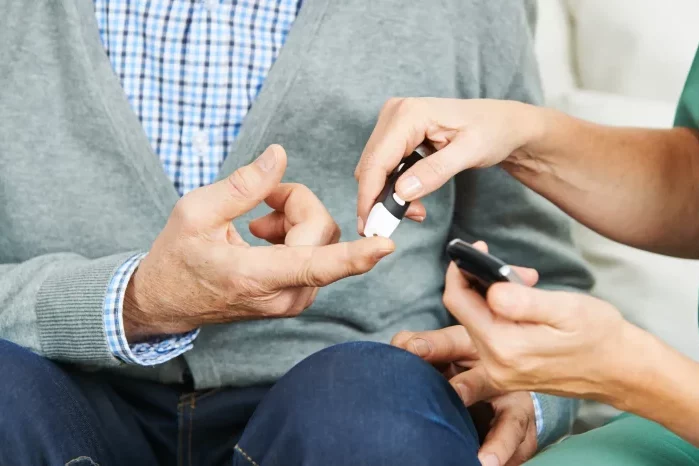In the realm of diabetes care, blood sugar monitoring is a cornerstone of effective management. While fasting and postprandial blood glucose tests are well-known and routinely used, random blood sugar readings also hold a critical place in diagnosis, monitoring, and emergency evaluation. For patients and healthcare providers alike, understanding what a random blood sugar reading signifies is essential.
Random blood sugar (RBS) testing offers insight into how glucose levels fluctuate throughout the day, regardless of when the last meal was consumed. Unlike fasting blood sugar or oral glucose tolerance tests, RBS reflects real-time glucose values without prior preparation or timing. This makes it invaluable in both clinical and emergency settings.
This article aims to provide a deep dive into the concept of random blood sugar readings—exploring how they work, when they are used, what their results mean, and how they fit into the broader framework of diabetes diagnosis and management.
What Is a Random Blood Sugar Reading?
A random blood sugar reading refers to a measurement of glucose levels in the bloodstream taken at any time of day, irrespective of food intake or fasting status. Unlike other glucose tests that require specific timing (e.g., fasting for 8–12 hours or testing two hours after a meal), random blood sugar testing is performed without any such constraints.
Healthcare professionals often use random blood sugar measurements:
-
To screen for undiagnosed diabetes.
-
To monitor glycemic fluctuations in patients already diagnosed with diabetes.
-
In acute care or emergency situations, where fasting is impractical.
-
To assess hyperglycemia-related symptoms such as fatigue, blurred vision, or increased thirst and urination.
Since random tests are influenced by recent meals, stress levels, activity, medications, and illness, they provide a snapshot of the body’s real-time ability to handle glucose. That said, interpretation must be done carefully, considering the clinical context.
Why Random Blood Sugar Testing Matters
Random glucose testing plays several crucial roles in both inpatient and outpatient care. These include:
1. Screening Tool for Undiagnosed Diabetes
For individuals without a known diagnosis but who present with symptoms of hyperglycemia—such as polyuria, polydipsia, blurred vision, or unexplained weight loss—a random blood sugar test can provide immediate diagnostic direction. According to the American Diabetes Association (ADA), a random glucose level of 200 mg/dL (11.1 mmol/L) or higher, accompanied by classic symptoms, is diagnostic of diabetes.
2. Monitoring Glycemic Control
While HbA1c and fasting glucose provide long-term data, RBS can help monitor daily glycemic variation and insulin sensitivity in real-world conditions, particularly for:
-
Type 1 diabetics on insulin.
-
Type 2 diabetics with fluctuating glucose levels.
-
Individuals experiencing erratic blood sugar despite adherence to therapy.
3. Assessing Response to Medication or Dietary Changes
After a change in therapy—whether through new medication, insulin dosage adjustment, or lifestyle intervention—random blood sugar readings can help assess immediate response.
4. Emergency Assessment
In acute or emergency settings, such as during a suspected diabetic ketoacidosis (DKA) episode, unconsciousness, or infection, waiting for a fasting test is not feasible. A random glucose test offers a fast and reliable method for evaluating hyperglycemia or hypoglycemia.
How Random Blood Sugar Tests Are Performed
A random blood sugar test is relatively simple. It can be done using:
-
Capillary blood sampling via a finger-prick glucose meter.
-
Venous blood draw, usually analyzed in a laboratory for a more accurate reading.
Fingerstick tests are common for self-monitoring at home. Although slightly less accurate than lab tests, they provide real-time results and are effective for routine monitoring.
Laboratory RBS tests are more accurate and used in clinical settings for diagnostic or confirmatory purposes.
No preparation is required, which is one of the major advantages of this test. It can be conducted at any time—during a clinic visit, in an ER, or at home—regardless of when the person last ate.
Interpreting Random Blood Sugar Readings
Understanding what the numbers mean is crucial. Random blood sugar readings must be interpreted within a clinical context, taking into account the patient’s medical history, symptoms, and other test results.
Important Note: A random blood glucose value ≥200 mg/dL, accompanied by symptoms of hyperglycemia, is considered diagnostic of diabetes according to ADA and WHO criteria.
For asymptomatic individuals, this result should be confirmed on another day using one of the following:
-
Fasting plasma glucose (FPG)
-
2-hour oral glucose tolerance test (OGTT)
-
Hemoglobin A1c (HbA1c)
Factors That Affect Random Blood Sugar Levels
Numerous variables can influence a random blood sugar reading, making it essential to interpret the results in a holistic manner.
1. Diet and Recent Food Intake
The most obvious factor is when and what the person last ate. A high-carb or high-sugar meal will likely cause a higher reading. Conversely, a low-carb or high-fiber meal might produce a more moderate result.
2. Medications
Certain medications, including corticosteroids, beta-blockers, and antipsychotics, can affect blood glucose levels. Insulin or oral antidiabetic agents, on the other hand, are designed to lower them.
3. Stress and Illness
Physical or emotional stress can lead to the release of stress hormones like cortisol and adrenaline, which increase glucose levels. Infections or acute illnesses may also elevate blood sugar unpredictably.
4. Physical Activity
Exercise increases glucose uptake by muscle cells, often lowering blood sugar levels. However, the timing and intensity of the activity can also cause short-term fluctuations.
5. Alcohol and Hydration
Alcohol can cause erratic glucose responses, especially if consumed without food. Dehydration, on the other hand, can concentrate blood glucose, leading to falsely elevated readings.
Clinical Application of Random Blood Sugar Testing
Type 1 Diabetes
In patients with Type 1 diabetes, random readings help assess day-to-day glucose variability. Since insulin requirements can change quickly, RBS readings, along with continuous glucose monitoring (CGM), help optimize insulin therapy and prevent complications like hypoglycemia or ketoacidosis.
Type 2 Diabetes
For Type 2 diabetics, especially those on oral medications or lifestyle therapy, random readings can provide additional insight into how well blood sugar is controlled throughout the day. RBS testing may be used to identify meal patterns that require adjustment or to evaluate the effectiveness of a new medication.
Gestational Diabetes
While fasting and OGTT remain the gold standard for diagnosis, RBS is sometimes used during pregnancy when symptoms appear suddenly or for monitoring high-risk pregnancies.
Emergency Use
A single elevated RBS level in a confused, drowsy, or acutely ill patient may lead to the identification of severe hyperglycemia, hyperosmolar hyperglycemic state (HHS), or diabetic ketoacidosis (DKA).
Self-Monitoring vs. Clinical Monitoring
Many patients ask whether random blood sugar testing at home is as effective as lab testing. While home monitoring is invaluable for day-to-day management, it should not replace lab assessments for diagnostic or long-term monitoring purposes.
Self-monitoring is most effective when:
-
Logging readings consistently.
-
Testing at varied times of the day (pre- and post-meal, bedtime, during symptoms).
-
Using results to adjust diet, medication, and physical activity.
-
Sharing data with the healthcare team for trend analysis.
Best Practices for Accurate Readings
To ensure reliable and meaningful random glucose values:
-
Use a calibrated glucometer with unexpired strips.
-
Wash hands thoroughly before testing to avoid contamination.
-
Record the time, symptoms, and recent food intake with each reading.
-
Use the same meter consistently to reduce variability.
-
Always correlate symptoms with the readings—don’t rely on numbers alone.
Common Misconceptions About Random Blood Sugar Testing
“I don’t need fasting tests if my random tests are normal.” Normal RBS readings are encouraging but may not fully capture underlying issues like impaired fasting glucose or postprandial spikes.
“A high RBS always means I have diabetes.” One high reading is not diagnostic without symptoms or confirmation. Temporary factors like stress or a large meal can skew results.
“Random tests are unreliable.” While they can vary, they are still clinically valuable, especially when interpreted correctly and used alongside other data.
Conclusion
Random blood sugar testing is a practical, flexible, and essential component of glucose monitoring in various clinical and home settings. While it doesn’t provide the structured insight of fasting or postprandial testing, its real-time data makes it particularly useful for acute evaluations, daily monitoring, and situations where fasting is not feasible.
For people with diabetes, incorporating random blood glucose readings into a broader monitoring strategy can lead to better glycemic control, more personalized therapy, and ultimately, improved health outcomes. However, as with all diagnostic tools, context matters. Interpreting random blood sugar readings requires a comprehensive understanding of an individual’s lifestyle, symptoms, medications, and overall health profile.
Whether you’re a patient managing diabetes or a healthcare provider navigating diagnosis and treatment, recognizing the importance and nuance of random blood sugar levels can lead to more informed decisions and better care outcomes.
Related topics:

























